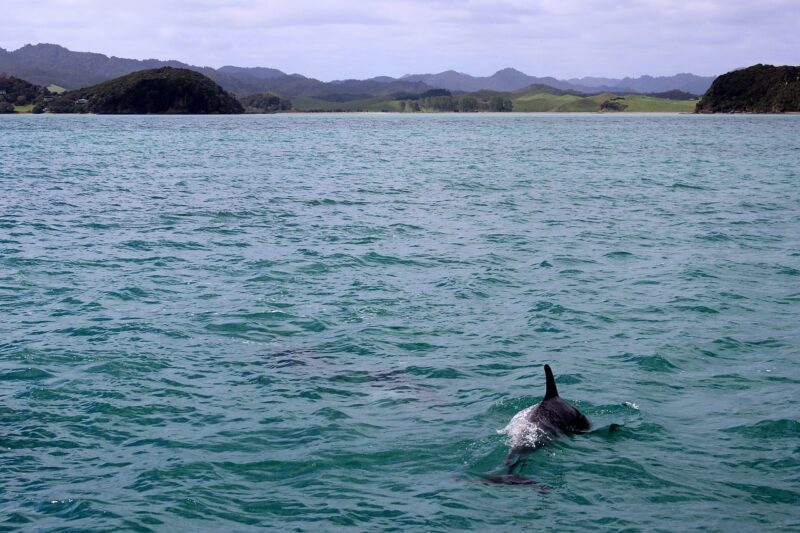Understanding the Social Structures of Dolphin Pods in the Ocean
November 15, 2024

Dolphins are renowned for their intelligence, playful nature, and complex social structures, but what does it mean to be part of a dolphin pod? Exploring these marine mammals’ social structures reveals much about their behavior, interactions, and even their survival strategies. This article delves into the fascinating world of dolphin pods, how they function, and the roles that different members play within these tightly-knit communities.
1. The Basics of Dolphin Pods
Dolphin pods are social groups that consist of a variety of members, including mothers, calves, juveniles, and adult males and females. These pods can range in size from just a few individuals to hundreds, depending on the species and environmental conditions. Different types of dolphins form pods, including the well-known bottlenose dolphins, orcas, and spinner dolphins, each exhibiting unique social behaviors.
### Characteristics of Dolphin Pods
Dolphin pods typically demonstrate strong social bonds among members, characterized by cooperative behaviors such as hunting, communication, and caring for the young. Here are some key characteristics of dolphin pods:
- Social Structure: Pod hierarchy often exists, with dominant individuals guiding group dynamics and decisions.
- Cooperation: Dolphins work together to hunt for food and defend against predators, showcasing remarkable teamwork.
- Communication: Echolocation and vocalizations play a crucial role in their interactions, allowing them to coordinate during hunts or warn of danger.
Understanding each pod’s social structure can provide insights into the dynamics that govern their communal life in the ocean.
2. The Composition of Dolphin Pods
Dolphin pods are often composed of both matrilineal (mother-led) and mixed-sex social structures. The composition varies based on factors such as species, habitat, and reproductive state. Here’s a breakdown of pod composition:
### Matrilineal Pods
In many dolphin species, pods are led by a matriarch, often an experienced female. These matrilineal structures help ensure that knowledge and skills are passed down through generations:
- Roles of Matriarchs: Matriarchs are vital for the protection and navigation of the pod during hunts or when facing threats. They are also key in teaching younger dolphins essential survival skills.
- Mother-Infant Bonds: Mother dolphins have strong bonds with their calves, often seen traveling and playing closely together for many years. This relationship is vital for calf development and learning.
### Mixed-Sex Groups
Some pods, especially those of various dolphin species, will include both males and females:
- Role of Males: Males often have dominant roles during mating seasons and may compete for the attention of females. Their social status can depend on age, size, and strength.
- Cooperative Breeding: In some pods, particularly those of bottlenose dolphins, cooperative breeding occurs where non-mother females assist in caring for calves, enhancing the pod’s overall survival rate.
Understanding the composition of dolphin pods reveals the intricate social dynamics that allow these intelligent creatures to thrive in their marine environment.
3. Communication Within Dolphin Pods
Communication is fundamental to the social structure of dolphin pods. These intelligent creatures have a complex system of sounds, gestures, and even body movements that facilitate interaction:
### Types of Communication
Dolphins use different communication methods to strengthen pod relationships and coordinate group activities:
- Vocalizations: Dolphins produce a range of clicks, whistles, and other sounds to convey messages, such as alerts about predators or coordinating during hunts.
- Echolocation: This is not only essential for navigation and hunting but also plays a role in social interactions, allowing dolphins to understand their surroundings better and communicate effectively within pods.
- Body Language: Postures, swimming patterns, and physical touch enhance interactions, signaling emotions or social status among pod members.
Communication fosters cooperation, reduces conflicts, and enriches social bonds within dolphin pods, demonstrating their highly advanced social intellect.
4. Social Behaviors of Dolphin Pods
Dolphins exhibit various social behaviors that enhance their pod dynamics, showcasing their playful and intelligent nature:
### Cooperative Hunting
One of the most striking aspects of dolphin social structure is their ability to hunt cooperatively:
- Herding Techniques: Dolphins work in unison to herd fish into tight groups, making them easier to catch. This teamwork enhances the chances of a successful hunt for the entire pod.
- Role Specialization: Different dolphins may take on specific roles during hunts, such as driving prey toward shallow waters while others await for the catch.
### Social Play and Interaction
Beyond hunting, socializing through play is essential in maintaining healthy relationships among pod members:
- Leaping and Surfing: Dolphins often engage in acrobatic displays, leaping out of the water and riding waves for fun, reinforcing bonds and learning through play.
- Social Grooming: Dolphins may also engage in physical interactions like rubbing against each other, which strengthens social ties and releases stress through physical contact.
These social behaviors highlight the complex interactions within dolphin pods and their reliance on strong social connections for survival.
5. The Impact of Environment on Pod Dynamics
Environmental conditions significantly influence dolphin pod dynamics and behaviors:
### Habitat and Location
Dolphins adapt their social structure based on the characteristics of their habitats:
- Availability of Resources: Areas rich in food supply encourage larger pod formations and more cooperative behaviors. In contrast, resource-scarce regions might lead to smaller, more aggressive pods.
- Human Influence: Coastal development, pollution, and fishing practices can disrupt social structures by affecting the availability of prey, leading to adverse effects on pod dynamics and behaviors.
### Conservation Considerations
Understanding social structures can aid in conservation efforts:
- Protecting Social Ties: Conservation policies that maintain natural habitats can help preserve these intricate social systems and enhance the resilience of dolphin populations.
- Monitoring Pod Health: Studying pod structures allows researchers to better monitor dolphin populations and their health, ensuring effective conservation strategies are implemented.
The relationship between dolphin pod dynamics and their environment underscores the necessity for conservation endeavours and the protection of natural habitats.
Conclusion
Dolphin pods are remarkable examples of social structures and cooperation in the animal kingdom. Their complex dynamics allow them to navigate the social waters of the ocean effectively, providing insights into their behavior and lifestyle. Understanding these social structures not only enhances our appreciation of these incredible creatures but also underlines the importance of protecting their habitats to ensure their survival.
By studying dolphin pods, researchers can gain deeper insights into their intelligence, communication, and cooperative behaviors—factors critical for their continued existence in the face of human impact. As we strive to understand these social structures, we also reaffirm our commitment to protecting the oceans they call home.







